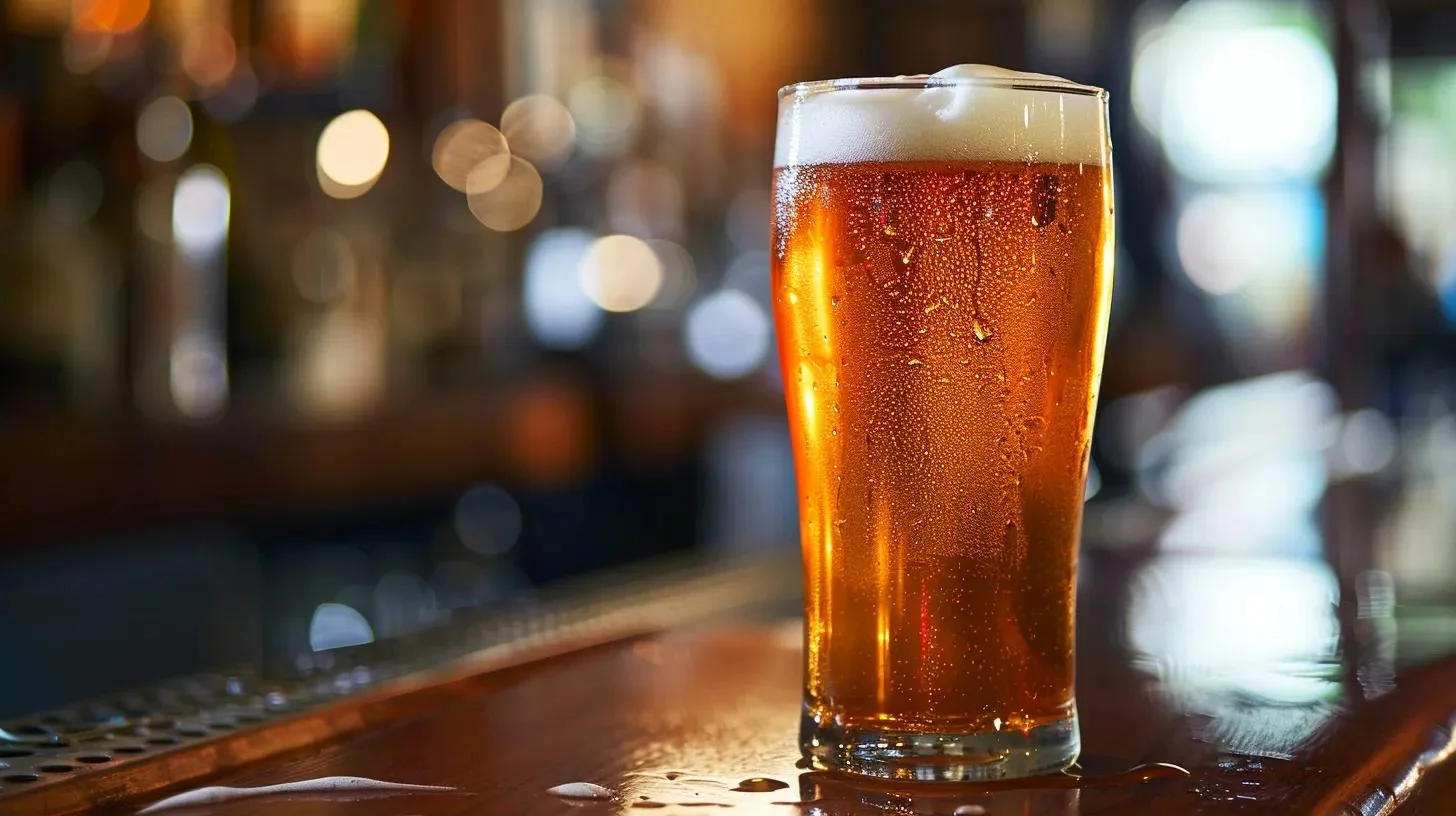How to Clean Keg Lines Without Kit: Simple Steps for Spotless Results

Maintaining a well-clean kegerator beer line is pivotal for both the taste of the beer and the health of those enjoying it. Over time, keg lines can become a breeding ground for bacteria, yeast, and beer stone, all of which can negatively affect the taste of the beer and potentially pose health risks. Through a thorough and careful process, one can ensure that their kegerator lines are kept pristine, preserving the quality and flavor of their draft beer.
Cleaning keg lines without a kit may require a bit more resourcefulness and manual effort, but it is not an overly complicated task. It involves gathering some basic items and understanding the correct procedure to disassemble, clean, and reassemble the kegerator components. Employing a regular cleaning routine not only helps deliver a fresh taste with each pour but also extends the lifespan of your equipment. A diligent approach to keg maintenance avoids common issues that can arise from neglect and ensures that your kegerator operates efficiently.
Key Takeaways
- Regular keg line cleaning ensures optimal beer flavor and safety.
- Simple items can effectively clean keg lines without specialized kits.
- Routine maintenance prevents common kegerator issues and extends its lifespan.
Essential Equipment for Cleaning Keg Lines
Cleaning keg lines effectively requires specific tools and a clear understanding of the components involved. Proper sanitation and maintenance will ensure the taste of beer remains good and equipment functions optimally.
Gather Necessary Supplies
Before beginning the cleaning process, one should assemble the following essential equipment:
- Cleaning Solution: A caustic or alkaline detergent specifically designed for beer line cleaning to remove build-up.
- Sanitizer: To sterilize the lines after cleaning and deter microbial growth.
- Brush: A small, long-handled brush tailored to fit into the beer faucet for thorough scrubbing.

- Spanner Wrench and Faucet Wrench: These tools are needed to disassemble the faucet and keg coupler for cleaning.

It is advisable to wear protective gloves to avoid skin contact with the cleaning chemicals.
Understanding Keg Line Components
The keg system's primary components requiring regular cleaning include:
- Keg Coupler: This connects the keg to the beer line. A spanner wrench can be utilized to detach it.
- Faucet: The endpoint where beer is dispensed. Use a faucet wrench to remove it from the draft system.
Having a basic cleaning kit on hand, which might include a pump for pushing the cleaning solution through the lines, can simplify the process. If unavailable, one can improvise with a hand pump or gravity feed system to circulate the cleaner through the lines.

Preparing the Keg and Lines for Cleaning
Before diving into the cleaning process, it's crucial to properly prepare the keg and lines. Ensuring the system is disconnected and the kegs and lines are initially rinsed will set a solid foundation for a thorough cleaning.
Disconnecting the System
Prior to cleaning beer lines, one must safely disconnect the system to prevent any potential exposure to pressurized CO2. To begin, the CO2 tank should be turned off to alleviate pressure in the draft system. Following this, the tap handle is also secured in a closed position. Then it's important to detach the keg coupler by pulling out and lifting the handle, which will remove the source of pressure from the kegerator lines. This disconnects the system and allows for safe handling of the components during the cleaning process.
Rinsing Before Cleaning
An initial rinse with cool water is advisable to remove loose residue. The process involves flushing the kegerator lines with water at a temperature that is effective yet safe for the line material—typically just below This rinsing step will help in dislodging any sediment and minimize the amount of cleaning agent required. One can utilize the existing draft system pressure to push cold water up through the lines, or simply use gravity for the flow if the system is non-pressurized post-disconnection.
Manual Cleaning Process Without a Kit
Maintaining the cleanliness of keg lines is essential for the quality of beer served as it prevents the accumulation of bacteria and yeast. A manual to clean draft beer lines using common household items can be an effective solution when a specialized kit is not available.
Steps for Hand Cleaning
Materials Needed:
- A large bucket
- A caustic beer line cleaning solution
- Cold water
- A soft-bristle brush or tube brush
- Clean towels or cloths
Procedure:
- Mix Cleaning Solution: In the bucket, mix cold water with a caustic cleaning solution according to the manufacturer’s instructions.
- Disconnect Keg Lines: Carefully detach the keg lines from the keg. If necessary, consult the kegerator manufacturer's guide to ensure proper disassembly.
- Initial Rinse: Flush the lines with hot water to rinse out any loose residue.
- Apply Cleaning Solution: Apply the mixed cleaning solution to the inside of the keg lines. Scrub thoroughly to remove buildup.
- Let Soak: Allow the lines to soak in the solution for at least 15-20 minutes to break down any organic material.
- Rinse Thoroughly: After scrubbing, rinse the lines with water several times to ensure all the cleaning solution is removed. Use Ph paper to make sure the chemical is out of the kegerator.
- Reassemble: Once the lines have been cleaned and rinsed, reassemble draft equipment to the kegerator.
By following these steps carefully, one can achieve thoroughly cleaned keg lines without the need for specialized cleaning kits.
Using a Recirculating Pump To Clean a Kegerator
Cleaning kegerator lines is crucial for maintaining the quality and taste of beer. A recirculating pump can efficiently clean the kegerator beer lines by using a fluid motion to ensure comprehensive coverage.
Step-by-Step Procedure Using a Recirculating Pump
- Prepare the Cleaning Solution:
- Mix a recommended beer line cleaner. Follow the manufacturer's instructions for the correct proportions.
- Alternative cleaners such as vinegar or a baking soda solution can be used, but they will not be as effective as beer line cleaners.
- Disassemble for Cleaning:
- Detach the faucet and keg coupler. Soak them in the cleaning solution to loosen any residue.
- Set Up the Pump:
- Connect the recirculating pump's input to a container with the prepared cleaning solution.
- Attach the output to the beer line's coupler connection point, ensuring a secure fit.
- Circulate the Cleaner:
- Turn on the pump, allowing the cleaning solution to circulate through the lines for at least 15 minutes to dislodge any build-up.
- Rinse Thoroughly:
- After circulation, disconnect the pump and flush the lines with clean water to remove any remaining cleaner. Use Ph Paper to verify cleaner is out of the draft beer system.
- Reassemble and Test:
- Once the lines are rinsed, reattach the faucet and coupler.
- Run a small amount of beer through the system to check for clarity and taste before serving.
Safety and Efficacy
- Safety Precautions:
- Always wear protective gloves and eyewear when handling chemicals.
- Ensure the area is well-ventilated to avoid inhalation of fumes.

- Efficacy of the Process:
- Recirculating pumps provide a consistent flow, optimizing contact time between the cleaner and line interiors.
- Regular use of a recirculating pump cleaning can prevent flavor contamination and bacterial growth.
Reassembling The Kegerator
After cleaning the keg lines, reassembly is a critical step to ensure that the system is ready for use. This process involves sanitization to prevent any contamination that could affect the taste of the beer or the operational efficiency of the bottle and kegerator.
Ensuring a Contaminant-Free System
To guarantee a contaminant-free brewing system, begin by sanitizing all the components that will come into contact with the beer. A food-grade sanitizer is essential in this process.
Once sanitized, allow all the components to air-dry on a clean surface, avoiding the use of towels or cloths that could introduce contaminants. Before reassembling, inspect each part to ensure it's completely dry and free from mold or any debris.
Reattach the faucets to their respective shanks and securely reconnect the beer lines to fill the keg coupler. During this phase, be cautious not to touch any surfaces that will come in contact with the beer to maintain sanitization.
Finally, connect the keg coupler to the keg, ensuring a snug fit to prevent any potential leaks. With the system reassembled, the system is fully prepared for serving fresh, clean beer.
Maintaining Keg Line Cleanliness
Maintaining the cleanliness of keg lines is crucial for preserving the quality of beer and ensuring the safety of its consumption. It involves establishing a regular cleaning regimen and sidestepping common mishaps that compromise the cleanest beer flavor.
Regular Cleaning Schedule
Frequency: Keg and beer tap lines should undergo cleaning every two weeks, or every time a new keg is tapped, to prevent the build-up of bacteria and yeast which can taint the beer's flavor.
Method: For effective cleaning, use a recirculating pump as described above. First, disconnect the lines from the keg and the tap. Next, run the cleaning solution through the lines for at least 15 minutes, followed by a thorough rinse with clear water.
Avoiding Common Mistakes
- Improper Disassembly: Ensure all parts of the keg system, including taps, are disassembled as per the manufacturer's instructions to prevent damage and ensure thorough cleaning.
- Incomplete Rinsing: After cleaning, it's pivotal that one rinses the keg lines with enough clear water to remove any residual cleaning solution, as this can affect the beer's flavor and potentially be harmful.
By attending to keg line maintenance with attention to these specific practices, one can maintain the integrity of the kegging system and the beer it dispenses, ensuring that each pint is as clean and flavorful as intended.

Troubleshooting Common Issues After Cleaning
After cleaning the lines of a keg, it's not uncommon to encounter issues such as leaks or foaming that can affect the quality of the draft beer system. Addressing these problems promptly ensures the system operates efficiently and maintains the integrity of the draft beer lines.
Identifying and Fixing Leaks
Leaks within the system can lead to loss of beer and contamination of dirty beer lines. To identify leaks:
- Visual Inspection: Check all connection points, such as where the lines attach to the keg coupler and the faucet.
- Soap Solution: Apply a soapy water solution to suspected areas and look for bubbles that indicate a gas leak.
To fix leaks:
- Tighten Fittings: If the leak is at a connection point, try tightening the fittings.
- Replace Washers: Damaged washers or gaskets should be replaced to ensure a proper seal.
- Hose Replacement: Perished or damaged lines may require complete replacement to resolve the leak.
Addressing Pressure and Foaming Problems
Problems with pressure and foaming are often related and can lead to off-flavors or flat beer.
- Check CO2 Tank: Ensure that the CO2 tank is correctly turned on and has sufficient pressure.
- Regulator Adjustment: Adjust the regulator to maintain recommended pressure levels, typically around 10-12 PSI for many draft beers.
If foaming persists:
- Temperature Check: Verify that the keg is stored at the right temperature, usually between 36-40°F (2-4°C).
- Line Cleanliness: Residual contaminants in the lines may cause excessive foaming; a second cleaning may be necessary.
By methodically working through these steps, the most common issues post-cleaning can be resolved, returning your draft beer system to optimal function.
Frequently Asked Questions
Cleaning keg lines is essential for the taste and safety of beer. Below are answers to common questions regarding the upkeep of Cornelius keg lines without a cleaning kit.
What is the best approach for cleaning Cornelius (Corny) keg lines?
The most effective method involves dismantling the keg lines and soaking them in a cleaning solution, such as a mixture of water and unscented, brewery-approved sanitizer. It's essential to thoroughly rinse the lines with clean water after soaking to remove any residue.
How often should keg lines be cleaned to maintain beer quality?
Keg lines should be cleaned every two weeks or, at minimum, whenever a new keg is tapped. Regular maintenance of clean beer lines prevents the accumulation of yeast, bacteria, and beer stones, which can negatively impact the flavor and safety of the beer.
Summary
Cleaning keg lines is essential to maintain the fresh taste of beer and prevent the buildup of yeast, bacteria, and beer stones which can contaminate the beer flow and pose health risks. While commercial cleaning kits are available, the recirculating pump is the bar none the best way to clean a kegerator. It's entirely possible to clean your beer lines and keg lines without one.
The basic steps in cleaning keg lines involve:
- Turning off the CO2 supply to avoid pushing beer or cleaning solution through the system prematurely.
- Disconnecting the keg lines to prepare them for cleaning.
- Flushing the lines with a cleaning solution to remove any residue. A mixture of water and an appropriate cleaning agent is commonly used.
- Rinsing thoroughly with clean water to ensure all cleaning solutions are removed.
It is recommended to clean keg lines every two weeks, or more often if the kegerator is in constant use. Regular cleaning not only ensures optimal beer flavor but also extends the lifespan of the kegerator. The process is straightforward and can be done with common household items, ensuring there is no barrier to keeping equipment clean and beer tasting its best.
For any other questions please reach out to us at Renny's.



